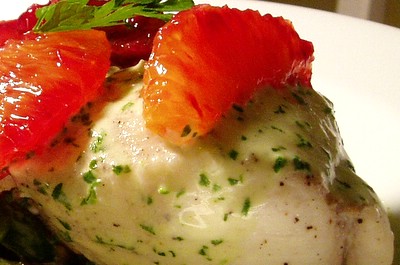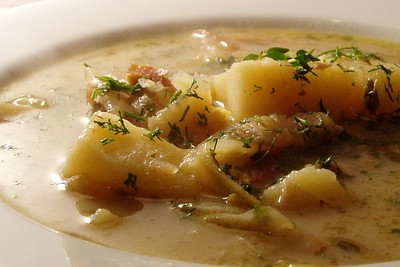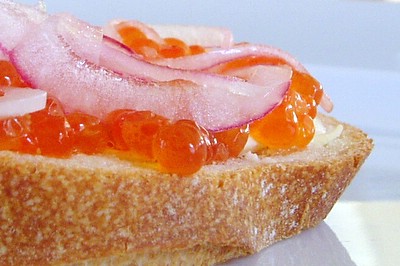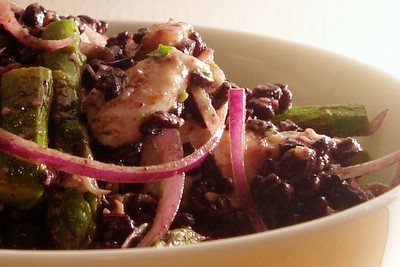We strive for excellent customer service and in the future we ask that you let us scale your selected fillet of fish and have you inspect the product prior to wrapping. Unfortunately, as the fish industry moves higher amounts of fish everyday and most of the preparation is made at the processing plants, it gets difficult for us to add extra processing procedures to the large amounts of fish at the store level, but we are more than willing to do so on a one-to-one basis.
In other words, if you want your fish scaled you have to ask. But obviously they are hoping that not many people will ask. I do appreciate the honesty in the letter, but I don't appreciate the dishonesty in the store. They quietly stopped scaling fish without telling their customers. There was no sign or indication from the seafood staff that anything changed.
What he says about preparation being done at the processing plants has been true for a long time. Whole Foods does not fillet their own fish. But I learned something interesting in yesterday's talk FISHY BUSINESS: THE FISHING INDUSTRY IN NEW ENGLAND by Max Harvey, a fish buyer for many New England restaurants. Whole Foods can specify exactly how they want their fish prepared (filleted, scaled, boned, etc). Of course, they do have to pay more for scaled fillets. Max also mentioned that fish prices went up recently. So I wonder whether selling fillets with scales is Whole Foods' way to save costs. I have no idea if that's really the case -- it's just my guess.
I find it strange that small fish markets can get fish already scaled, while a big fish (no pun intended ;) like Whole Foods is "stuck" with whatever their suppliers give them. I have a feeling that Whole Foods is getting exactly what they want. If their customers haven't given them hell about this issue yet, I guess everyone's happy.
So thanks dear Whole Foods for offering to scale my piece of fish, but I'll go to a real fish market for salmon, striped bass, red snapper, or any other fish I plan to eat with the skin.

 If you like savory tarts, you probably have your favorite. Is it Quiche Lorraine? Spinach and Mushroom, or maybe Potato and Leek? Well, whatever it is – it’s not really your favorite. Oh sure, you might think it is. But that’s just because you haven’t tried my Tomato Onion Tart. Trust me – it has no equals.
If you like savory tarts, you probably have your favorite. Is it Quiche Lorraine? Spinach and Mushroom, or maybe Potato and Leek? Well, whatever it is – it’s not really your favorite. Oh sure, you might think it is. But that’s just because you haven’t tried my Tomato Onion Tart. Trust me – it has no equals. Making my own
Making my own 

 I seldom look for shortcuts or high tech equipment to help me with prep tasks. Herb choppers or garlic presses always seemed irrelevant to me because I can chop herbs and mash garlic just as fast with my Wusthof knife. Beside my knife is easier to wash than all those gadgets. But there is one old fashioned tool that I hate with a vengeance – mortar and pestle. Attempting to make aioli in it just once has totally rid me of desire to pound any food related item ever again. In spite of many cooks’ conviction that nothing can rival the taste of hand pounded pesto, I think I do quite well with a food processor – thank you very much. And the blender does an amazing job with herb oils. Dump a bunch of parsley and couple of cups of oil into a blender, bzzz, and voila – parsley oil is ready.
I seldom look for shortcuts or high tech equipment to help me with prep tasks. Herb choppers or garlic presses always seemed irrelevant to me because I can chop herbs and mash garlic just as fast with my Wusthof knife. Beside my knife is easier to wash than all those gadgets. But there is one old fashioned tool that I hate with a vengeance – mortar and pestle. Attempting to make aioli in it just once has totally rid me of desire to pound any food related item ever again. In spite of many cooks’ conviction that nothing can rival the taste of hand pounded pesto, I think I do quite well with a food processor – thank you very much. And the blender does an amazing job with herb oils. Dump a bunch of parsley and couple of cups of oil into a blender, bzzz, and voila – parsley oil is ready.
 My brother and his girlfriend are some of the youngest foodies I know. At the ripe age of 21 and 20, they love hanging out in the kitchen with me (Megan mostly helping, and Leo mostly sneaking food), cooking on their own, and even reading food blogs. So when they came to visit this weekend, it was a perfect opportunity to make something special. Not that I need an excuse to make a special dinner, but I do need an excuse to make
My brother and his girlfriend are some of the youngest foodies I know. At the ripe age of 21 and 20, they love hanging out in the kitchen with me (Megan mostly helping, and Leo mostly sneaking food), cooking on their own, and even reading food blogs. So when they came to visit this weekend, it was a perfect opportunity to make something special. Not that I need an excuse to make a special dinner, but I do need an excuse to make 








 Andy from
Andy from 
 As I was scrambling to find pots, pans, and cooking spoons during my first class at the Newton Continuing Education, I wondered what I got myself into. After 4 years, I got used to the little quirks of the Cambridge Center for Adult Education – no sharp knives (so I bring my own), be prepared to rewash all equipment before using it, and don’t expect all the burners on the stovetop to work. But this was my first time teaching at Newton, and I didn’t know what to expect.
As I was scrambling to find pots, pans, and cooking spoons during my first class at the Newton Continuing Education, I wondered what I got myself into. After 4 years, I got used to the little quirks of the Cambridge Center for Adult Education – no sharp knives (so I bring my own), be prepared to rewash all equipment before using it, and don’t expect all the burners on the stovetop to work. But this was my first time teaching at Newton, and I didn’t know what to expect.